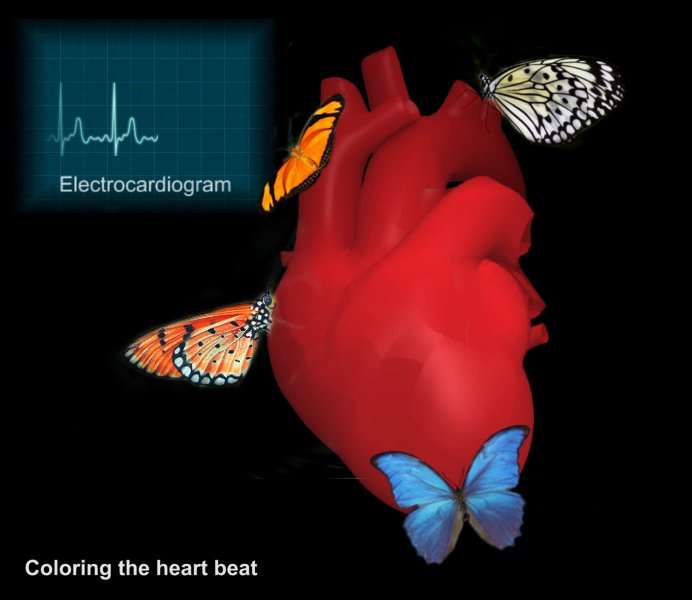Coloring the heartbeat

In the 17th Century two giants of science, Isaac Newton and Robert Hooke, were both trying to understand how the wings of butterflies and peacocks, which are made of the same material as our fingernails and hair, could colors of such brilliant quality. They both came to the same conclusion, the color was a result of tiny structures on the wing, structures so small that they could not observe it themselves but had deduced must exist.
Science and technology have progressed far in those 300 years and not only can we easily observe the structure of a butterfly's wing that produces such brilliant color, but we can readily create them ourselves. Inspired by this kind of structural color, researchers at Kyoto University's Institute for Integrated Cell-Material Science (iCeMS), led by Prof. Easan Sivaniah, in collaboration with researchers from Semmelweis University and Kyoto University Medical School, have produced a structural color device for measuring the beating of heart cells which they hope will help speed up the process of pharmaceutical testing.
Like the wing of a butterfly, this device produces structural color from micro-patterns developed on the surface of a polymer gel. Heart cells beating on the device cause the structural color to change which can be detected easily with low power microscopes.
During pharmaceutical development, screening of drugs with different cell types is essential to weed out potentially dangerous drugs before they are tested on humans. During this early stage high-throughput methods are important to save time and cost. The new device uses the contraction of heart cells to change the light reflection properties of the device and as a result the beating of the cells can be measured easily in a non-invasive way, facilitating high throughput testing. As the lead author, Andrew Gibbons says, "Heart disease is one of the leading causes of death around the world. Finding easy and early ways to screen the good drugs for heart patients is vital."
The researchers were able to demonstrate the practical utility of their new device by monitoring the beating pattern of heart cells during the application of pharmaceuticals. They were able to record the beating pattern of the entire cell culture simultaneously, due to their ability to observe under low magnification.
Prof. Sivaniah, head of the Pureosity Laboratory at iCeMS specializes in polymer and material science and are interested in the intersection between the material science and biological world. "This was a very unique and exciting project for us, there are not many places that can easily facilitate this kind of multi-disciplinary research."
More information: A. Gibbons et al. Real-time visualization of cardiac cell beating behaviour on polymer diffraction gratings, RSC Advances (2017). DOI: 10.1039/c7ra06515a
Provided by Kyoto University





















